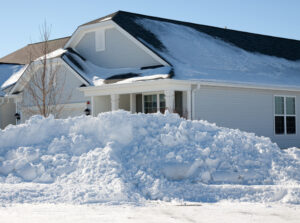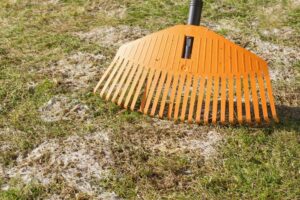
In Alberta, with the heavy snow fall we experience anywhere from 6 to 8 months a year (October to April/May) once the snow starts to melt, you may notice white or grey, webbed patches on your lawn, or “snow mould”.
What is snow mould?
Snow mould is an outdoor mould or lawn fungus that thrives in wet, cold conditions, feeding off ground moisture and then sprouts and reproduces come spring when soil surface temperature approaches 0 C and the snow starts melting.
It accumulates in the layers of snow throughout our long Alberta winters. Then as the snow melts, becomes visible on the lawn, in patches and looks like spider webs.
Types of snow mould in Alberta:
- White/gray snow mould
- Pink snow mould
“Both types of mould cause the grass to die and can trigger allergies in people. Pink snow mould is the more serious of the two, as it can kill grass roots as well as blades. It can also remain active and spread in temperatures up to 60°F (15 °C) . Your grass may re-grow after an infestation of gray snow mould, but not after pink.” (Source: This Old House)
Where does snow mould commonly appear?
“Snow mould occurs when there is heavy snow cover that is not completely frozen for an extended period.” (Source: CBC)
Snow mould commonly develops in these types of areas:
- Shady areas that don’t get direct sun
- North facing areas
- Spots where you pile snow and is slow to melt
Will snow mould damage my lawn?
Snow mould may damage your turf if not dealt with.
“Snow mould often kills the turf and sends spores into the air each spring — much to the chagrin of often-unsuspecting allergy sufferers.” (Source: CBC News)
An article on CTV News Calgary in 2018 on snow mould, recommended that people who suffer from this seasonal allergy break ice around your yard to quicken the melting process. “Wind and heat kill this mould,” said Dr. Sakina Raj (who was quoted in the article). “When it goes above 20 degrees centigrade, they’ll be gone, or if it’s very windy then the spores will be gone.”
And if you suffer from seasonal allergies, try an antihistamine, and if that doesn’t work, then schedule an appointment to visit your doctor.
Snow mould usually just affects the grass blade. If you have snow mould the affected blades will likely dry up, but the health of the plant itself should not be negatively impacted.
What to do if you see snow mould?
If you see snow mould, gently rake the lawn where you see it. This will allow air to circulate throughout the affected air, allow the soil to dry more quickly and will also fluff up recovering grass. Also you may want to wear a mask to avoid potential allergy issues.
How can you avoid snow mould?
Keep your lawn healthy:
- Apply fall fertilizer at the proper time
- Maintain a healthy lawn height (2” to 3”)
- Mow before the first snow and be sure to cut it slightly shorter than normal. Also, it may be helpful to bag the clippings to avoid trapping extra moisture in the ground.
- Make sure your lawn is level and fill low areas with topsoil to prevent water pooling
- “Don’t let leaves or snow pile up. Anything that traps moisture is bad news for grass, so rake up leaf piles in the late fall. Similarly, when shoveling driveways or sidewalks, try not to create large piles of snow that will take a long time to completely thaw.” (Source: This Old House)
A Final Note
If you find snow mould in your lawn in the spring, don’t worry. As the temperatures warm up, snow mould will typically resolve itself. As the temperatures warm between 7 and 15, soil starts drying out and the snow mould fungus will stop growing.
If you have any questions about how to care for your lawn, please contact our Earth Smart Property Solutions Team and we will be happy to help however we can.
Sources:
CBC, Is snow mould making you sneeze? Gesundheit!
CTV News Calgary, Melting snow exposes hidden mould, majority of Calgarians left sniffling
This Old House, What Is Snow Mold & How to Remove It



Recent Comments